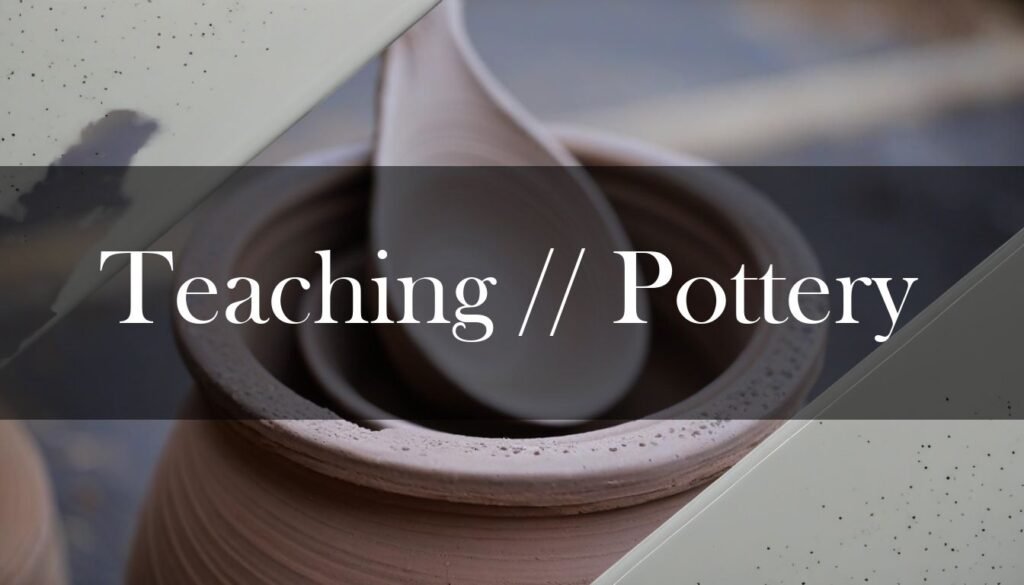So, you’re thinking of teaching pottery classes? That’s fantastic! Sharing the joy of creating with clay is such a rewarding experience. Let’s dive into what it takes to set up a pottery studio and run successful classes. You may want to read this guide to pottery studio safety to make sure you are ready.
First things first: Legal stuff. Before you even think about opening your doors, you’ll need to make sure you’re all squared away with the local authorities. This typically means getting a general business license from your city or town, and an Employer Identification Number (EIN) from the IRS if you plan to hire any help or operate as a corporation or partnership. If you’re planning on selling your students’ creations (or your own), you’ll likely need a sales tax permit as well. Then there are zoning laws. Make sure your chosen studio space is actually zoned for commercial activity. You might need a zoning permit to be fully compliant. Depending on your location, a Certificate of Occupancy (CO) might be needed to show your studio meets all the building codes and regulations. You’ll also want to check in with your local fire department, as kilns can be a fire hazard, and you may need a permit and regular inspections. Depending on the scale, you may need to look into OSHA regulations for health and safety. And, of course, you may need enviromental permits if you are disposing of wast or have certain types of emissions.
Next, let’s talk money. Setting up a pottery studio involves some initial investment, but don’t let that scare you! You can start small and build as you grow. The big-ticket items are a pottery wheel (or several!), which can range from a few hundred dollars for a manual kick wheel to upwards of $1500 for a good electric one. Kilns are another significant expense, with small electric ones starting around $1000. Don’t forget work tables, a wedging table, shelving, and all those essential hand tools! Clay can be purchased per bag ($10-$50), stoneware is a good option for functional stuff, costing between $25-$35 for 50 pounds. Glazes too are also needed. Depending on the space you choose, rent and utilities will of course vary. Electricity can be anywhere from $50-$200 per month. A ventilation system is important for a studio as well, and electrical upgrades may be neccesary. All in all, a modest home studio could potentially be set up for as low as $2,000 to $3,000, while a more professional studio could cost upwards of $10,000 initially.
“Don’t be afraid to start small and grow organically. It’s better to have a few passionate students than a packed class of uninterested ones.”
Anonomous Pottery Teacher
Now, how do you get people in the door? Marketing is key! Start with a user-friendly website where potential students can easily find class schedules, pricing, and book their spots. A blog with helpful pottery tips and insights can also draw people in. Social media is your friend. Platforms like Instagram and Facebook are great for sharing photos of your students’ work, behind-the-scenes glimpses of the studio, and class updates. Local partnerships are also a great way to expand your reach. Think about teaming up with local cafes, boutiques, or even wellness studios for cross-promotion or joint workshops. Referral programs can be amazing, and encourage current students to bring in new friends. Maybe you can also host open studio events. Let people come in, get their hands dirty, and see what pottery is all about.
Here’s a few great ways of getting new people interested:
- Have good SEO on your website so local people can find you.
- Offer discounts.
- Ensure your website is looking fresh and modern.
Here’s a few thing you can do that are bad:
- Have an out-dated or poorly designed website.
- Offering classes at inconvenient times.
- Not offering make up classes.
Safety first! Kiln burns are a real risk, so make sure your kiln is in a safe location and that everyone knows how to operate it properly. Silica dust can be harmful if inhaled over time, so keep your studio well-ventilated and encourage the use of respirators when working with dry clay or glazes. Ergonomics are also crucial. Prolonged wheel throwing or wedging can strain your body, so adjust workstations to comfortable heights, take breaks, and stretch regularly. Chemical hazards with glazes and materials is another concern, so opt for lead-free glazes whenever possible and ensure proper ventilation. Have fire extinguishers and make sure everyone knows how to use them. And remember: a clean studio is a safe studio. Here’s a guide to wedging techniques to share with your students.
Running a safe and clean studio is key to the success of the operation. Make sure people understand the risks, and feel safe while working with the materials.
Finally, let’s talk class formats and curriculum. For beginners, start with the basics: pinch pots, coil building, and slab construction. As students progress to the intermediate level, introduce more complex forms and techniques. Have them work on producing multiple items of similar shape and size. Advanced classes should focus on personal expression and mastering advanced techniques, and have students develop their own personal style.





